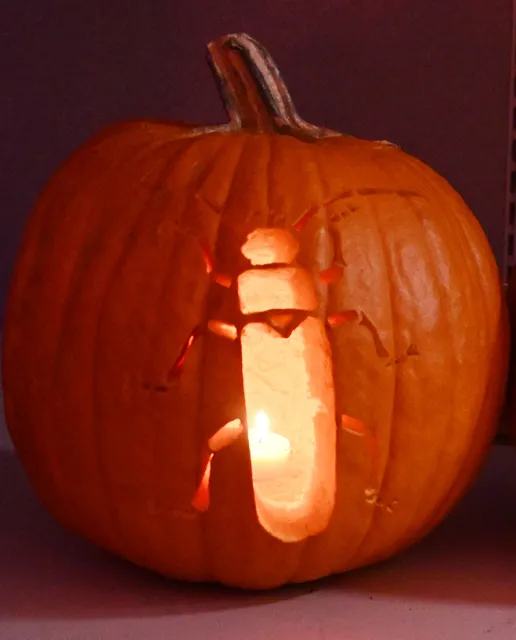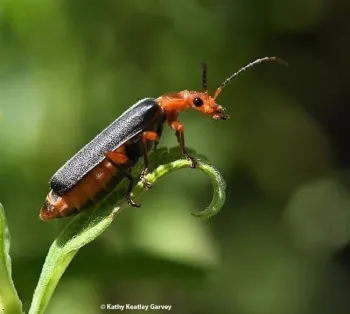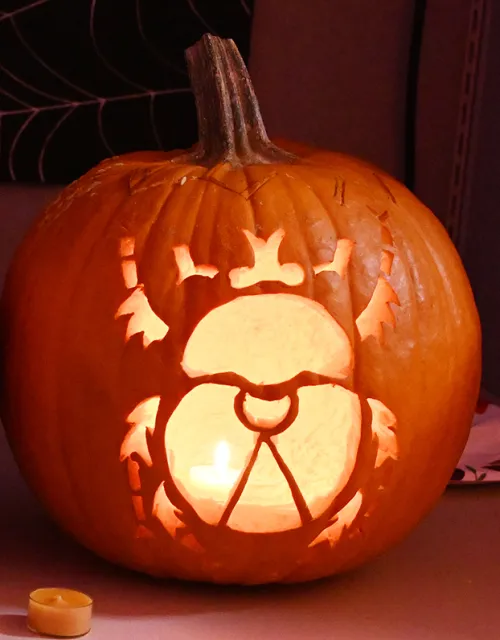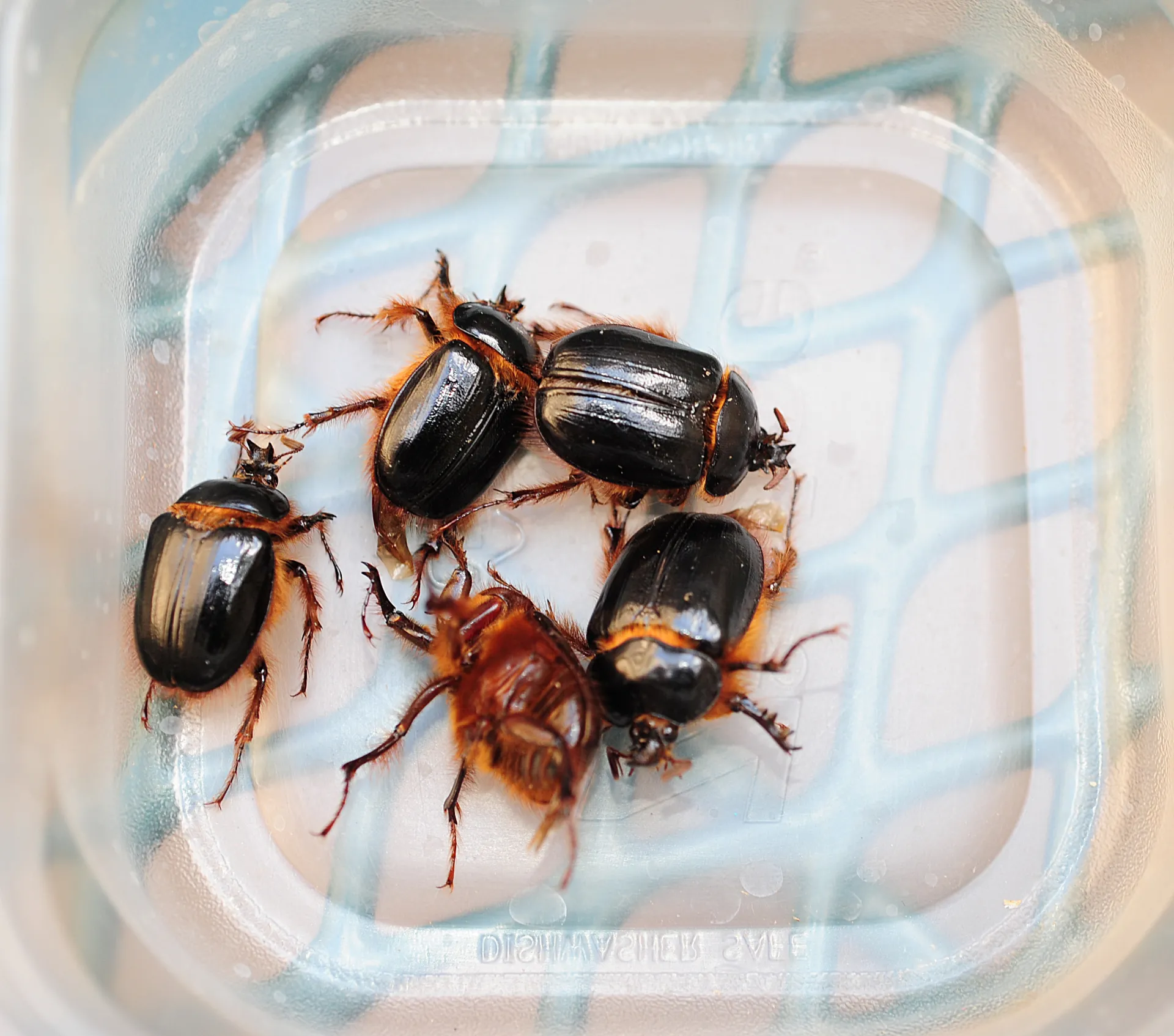
Don't expect traditionally carved pumpkins at the annual pre-Halloween celebrations at the Bohart Museum of Entomology at the University of California, Davis.
Think insects.
The annual event, hosted by the Bohart Museum Society, usually feature pumpkins carved by members of the UC Davis Entomology Club.
At last Saturday's celebration, a brief "lights out" revealed (1) a soldier beetle (Cantharidae) jack o'lantern, the work of Oliver Smith, president of the club, and (2) a rain beetle (Pleocomidae) jack o'lantern by Dylan Vega.
Soldier Beetles
Soldier beetles are so named because they are reminiscent of the red coats of the British soldiers during the American Revolution. And like lady beetles, they eat plenty of aphids.
The UC Statewide Integrated Pest Management Program (UC IPM) provides a good description of the soldier beetle:
"Adult soldier beetles are elongate and usually dark brown to black with orange, red, or yellow. The head is commonly bent downward. The antennae are 11-segmented, threadlike, and commonly held forward of the body. The pronotum is usually wider than the head and wider than long. The wing covers are smooth to velvety appearing and soft and flexible, giving rise to the common name leatherwings. Adults range from 1/16 to 1-1/8 inches (1.5 to 28 mm) long, varying by species....About 160 species of soldier beetles in 11 genera occur in California. Common genera include Cantharis, Chauliognathus, and Podabrus."

Adults are active during the day and usually observed on flowers or leaves infested with aphids or other honeydew-excreting insects," UC IPM says. "When disturbed, adults may withdraw their legs and drop to the ground as if dead. Adults' blackish and red coloration alerts vertebrate predators that cantharid beetles are distasteful; adults, larvae, and pupae can excrete noxious, defensive chemicals from specialized abdominal glands."
Rain Beetles

The rain beetles, often described as odd-looking critters that are "large, robust and shiny," spend most of their lives in immature stages beneath the ground, and that can total a decade or more, scientists estimate. The adults surface when the ground is soaked, thus the name, "rain beetles." The adults do not feed; they have no mouthparts or digestive tracts. They rely on the fat stored from their larval stage.
UC Davis Distinguished Professor Emerita Lynn Kimsey, director of the Bohart Museum for 34 years before her retirement Feb. 2, 2024 (and who continues to do research, lead the Bohart Museum Society and write its newsletter), is accustomed to answering questions about both insects, but especially rain beetles.
"In California, Pleocoma is found only in foothill and mountain habitats, never on the valley floor that I know of,” Kimsey earlier told us. “A lot of the populations have been extirpated by housing developments. When I was a kid living in the Berkeley Hills in El Cerrito we had lots of males flying after every rain but once the neighborhood was built up they vanished.”
Arthur Evans and James Hogue, authors of Introduction to California Beetles (University of California Press, Berkeley) say that “on average, males of some rain beetles have only enough energy stored as fat to give them about two hours of air time and live only a few days. The more sedentary females require less energy and may live for months after fall and winter storms.” The flightless females emit a pheromone so the males can locate them.
“California's rain beetles occur throughout the mountainous regions of the state, except in the deserts,” according to Evans and Hogue. “Small, isolated populations also occur in the Sacramento Valley and the coastal plain of San Diego County."
Now if some Halloween trick-or-treaters were to encounter a rain beetle...


